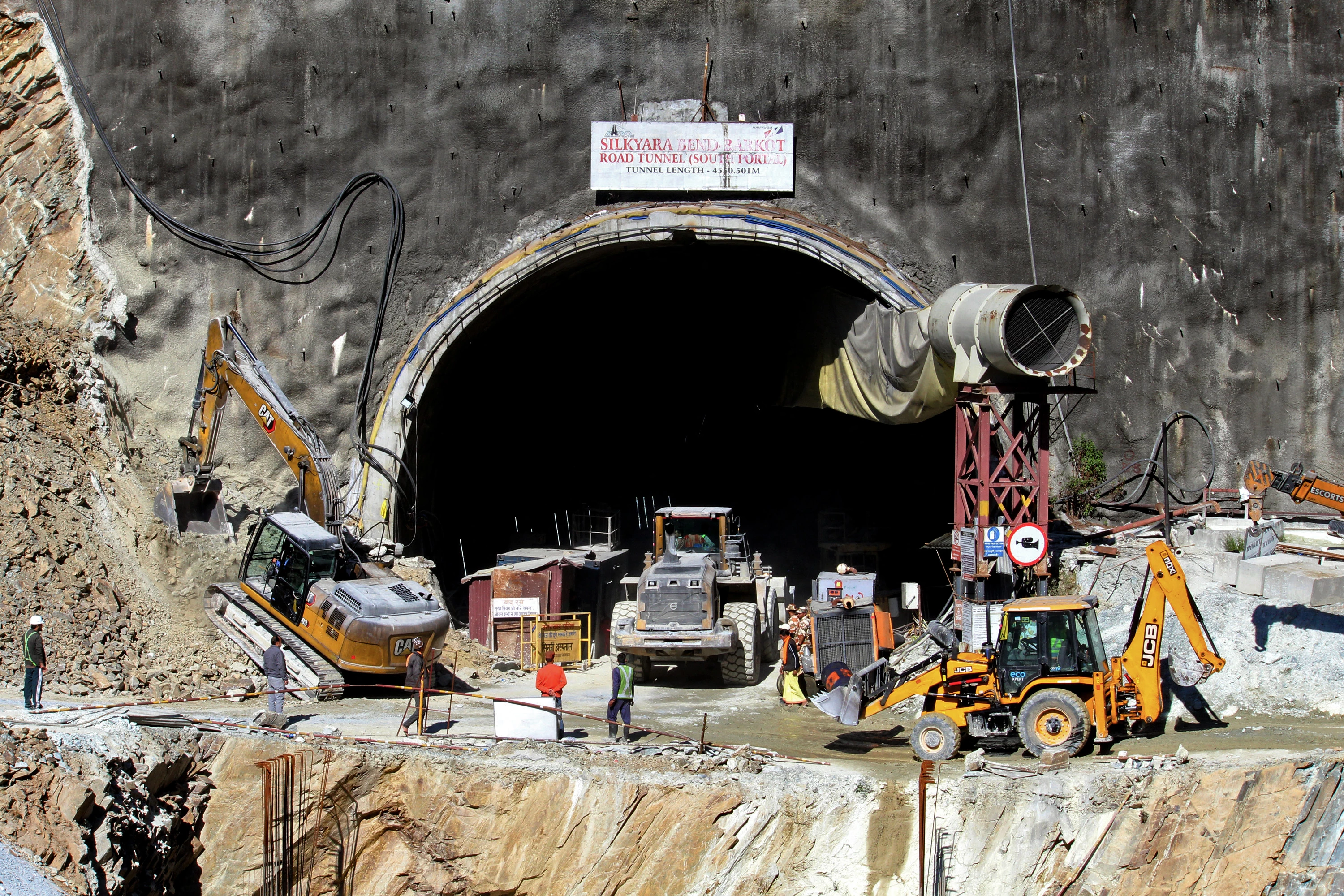Indian rescuers were battling Monday to free 41 men trapped in a road tunnel for nine days, as they prepared to dig an entirely new shaft after previous efforts failed.
Excavators have been removing earth, concrete and rubble from the under-construction tunnel in the northern Himalayan state of Uttarakhand since November 12, after a portion of the tunnel collapsed.
But rescue efforts have been slowed by falling debris as well as repeated breakdowns of the crucial heavy drilling machines, with the air force having to twice airlift new kit.
Engineers had been trying to horizontally drive a steel pipe through the debris, just wide enough for the increasingly desperate men to squeeze through at least 57 metres (187 feet) of earth and rock that block their escape.
But drilling on that route was paused on Friday, after a cracking sound created a "panic situation", officials said.
Teams were now preparing to dig the new shaft from above, forcing workers to cut an entirely new track up to the top of the forested hill high above for the heavy equipment needed.
Officials estimated the proposed shaft would need to be 89 metres (291 feet) deep to reach the men.
Experts have warned about the impact of extensive construction in Uttarakhand, where large parts of the state are prone to landslides.
"Every effort is being made," Uttarakhand chief minister Pushkar Singh Dhami said in a statement Monday, insisting the "workers trapped in the tunnel are safe".
He said he had spoken to Prime Minister Narendra Modi about the crisis.
- 'Get them out' -
Top local civil servant Abhishek Ruhela said the track to the new drilling site was three-quarters built.
"Up to 900 metres (2,950 feet) of the 1,200 metre-long road being built for drilling over the tunnel has been completed," Ruhela told AFP.
Rescuers have been communicating with the trapped workers by radio, while food, water, oxygen and medicine have also been sent to them via a narrow pipe.
Anshu Manish Khalkho, director of the government's highways and infrastructure company, NHIDCL, said Monday that workers had successfully installed a wider 15-centimetre (six-inch pipe), allowing more food to be sent.
"We will now provide them with food and medical supplies through that pipe," Khalkho said in a statement.
Foreign experts have been drafted in, including independent disaster investigator Arnold Dix, president of the International Tunnelling and Underground Space Association.
"We are going to find a solution and get them out," Dix told reporters Monday at the site.
"A lot of work is being done here. It is important that not only the men rescued but also the men who are (doing the) rescuing are safe."
Villagers have set up a Hindu temple at the mouth of the tunnel to the local god, Boukhnag, saying the original temple had been moved during construction.
Some villagers blamed the tunnel collapse on the fact that the initial temple was destroyed.
The tunnel is part of Modi's infrastructure project aimed at cutting travel times between some of the most popular Hindu sites in the country, as well as improving access to strategic areas bordering rival China.


